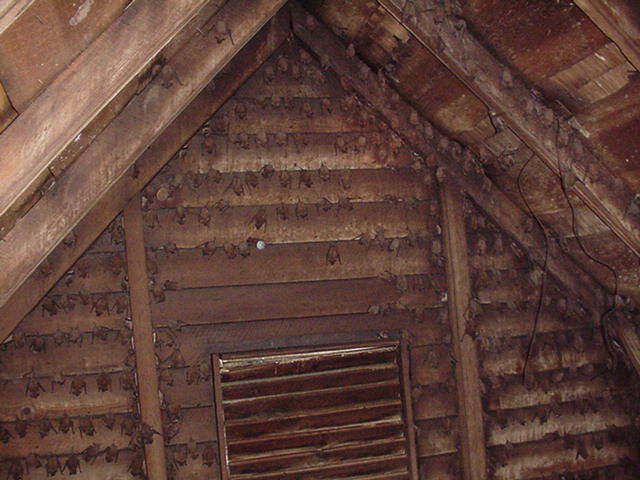Do bats creep you out? If so, you are not alone! The mystery of the bat, its elusive nature and erratic flight patterns and some of its physical features lend to the fear factor bats instill in many people. They are, however, fascinating creatures that provide numerous benefits to ecosystems and human systems, and Ontario has eight species that spend their winters hibernating in the province.
It is difficult to identify the different species due to their nocturnal habits, but the types of bats that are found in and around Kitchener are:
- Big brown bat
- Little brown myotis bat
- Hoary bat
- Silver-haired bat
- Eastern red bat
- Tri-coloured bat
- Northern long-eared myotis bat
- Eastern small-footed myotis bat
Though generally harmless, and undeserving of their bad reputation, they are potential rabies carriers. The number of bats that ever get the disease, however, is less than 1%. Bats are also a protected species in Ontario under the Fish and Wildlife Conservation Act. It is illegal to kill them, even if you locate one in your home. Should you discover one or more in your house, it is safest for the bat and you if you contact experts in humane bat removal in Kitchener.
Predators in the Night
All bats do their hunting at night and sleep during the day. They have voracious appetites, which is a good thing for us. No, they won’t turn you into a vampire. They are actually not at all eager to have any sort of human encounter and tend to only bite when scared, threatened or sick. Ontario bats do, however, eat a lot of insects. All eight of the province’s resident and migratory species are insectivores.
Their feasting feats are impressive. They can eat up to their weight in insects, including mosquitoes. This is good news for your outdoor activities in the summer! The big brown bat and the little brown bat are regularly seen in urban environments, making a huge dent in mosquito populations. Other species are key to keeping agricultural crops safe from insect infestations, saving farmers a lot of harvest losses.
Homesteaders in Your Home
The preferred habitat for most of Ontario’s bats is in or on the edges of forests and near water. A majority of them hibernate in caves, which makes them prone to white-nose syndrome, a deadly disease that is threatening the survival of many bat species. The three migratory bat species — hoary, silver-haired and eastern red — are less susceptible to the disease, possibly because they prefer to hibernate in the trees.
Bats are inactive during the daylight hours; during which time they find their favourite locations to roost. Trees provide many bats with the perfect sleeping spot. Some prefer the foliage and branches, while others like to squeeze behind the bark or in holes. Rock crevices and caves are another favoured roosting place. The big brown bat, little brown bat, tri-coloured bat, small-footed myotis and long-eared myotis all often head for the shelter of buildings for their daytime rest.
The big and little brown bats, as well as the tri-coloured bat, regularly set up their maternity colonies in human-made structures. One favoured location is the attic in a home. This means that bat sightings in or around your home in the warmer months might indicate a potential colony in your attic. Extra care must be taken in these situations to protect the offspring, so bat removal has to wait until it is safe.
Bat Removal in Kitchener
It takes special care, knowledge and training to safely remove bats from a home. This is not something homeowners should attempt themselves. The protections given to bats requires consideration for where the animals are in their reproduction, annual and life cycles before removal can occur. At Skedaddle Humane Wildlife Control, we take all of the necessary precautions to protect these valuable animals in the removal process. If you have bats in your house, contact the experts to handle the situation humanely and safely.



